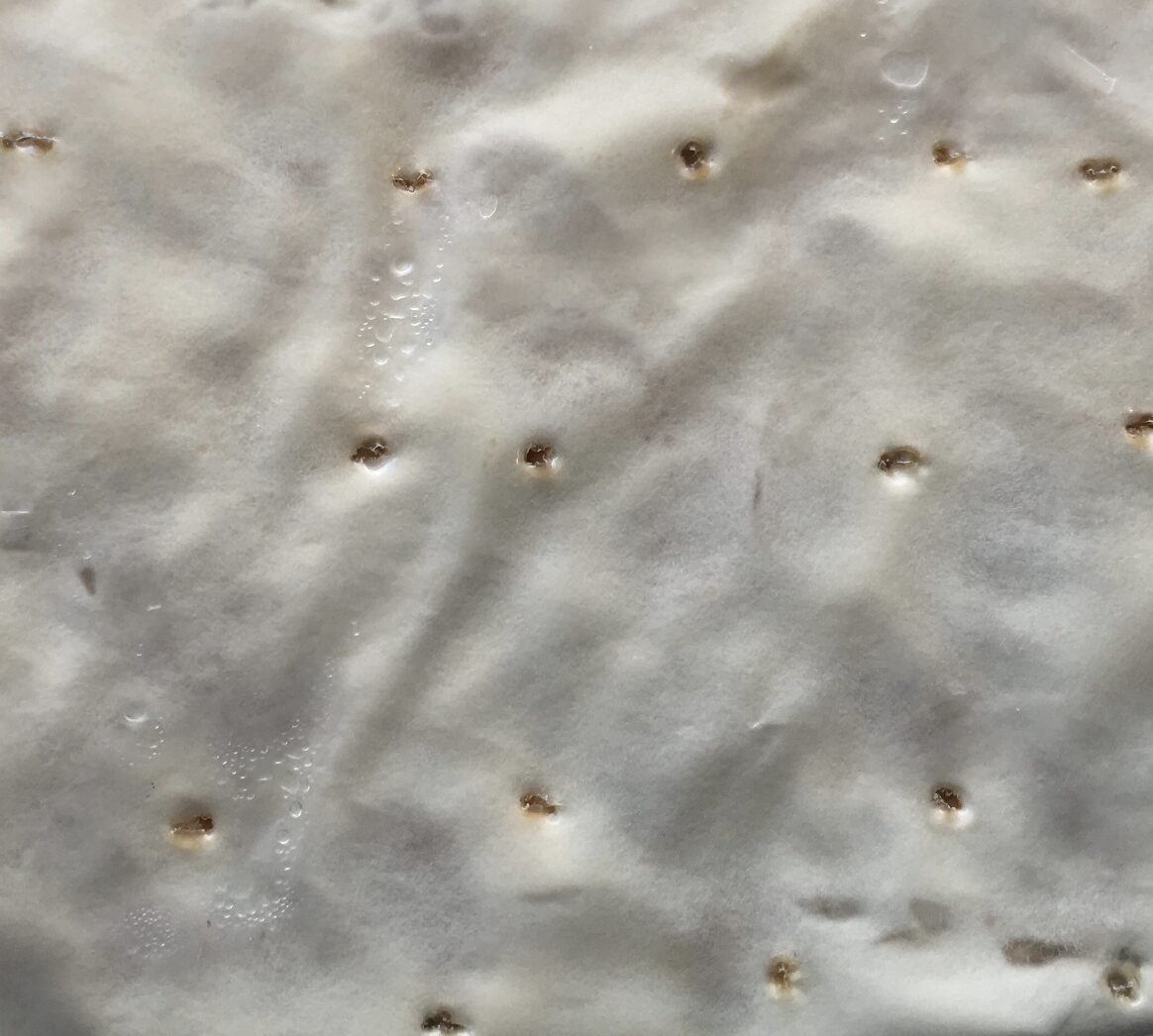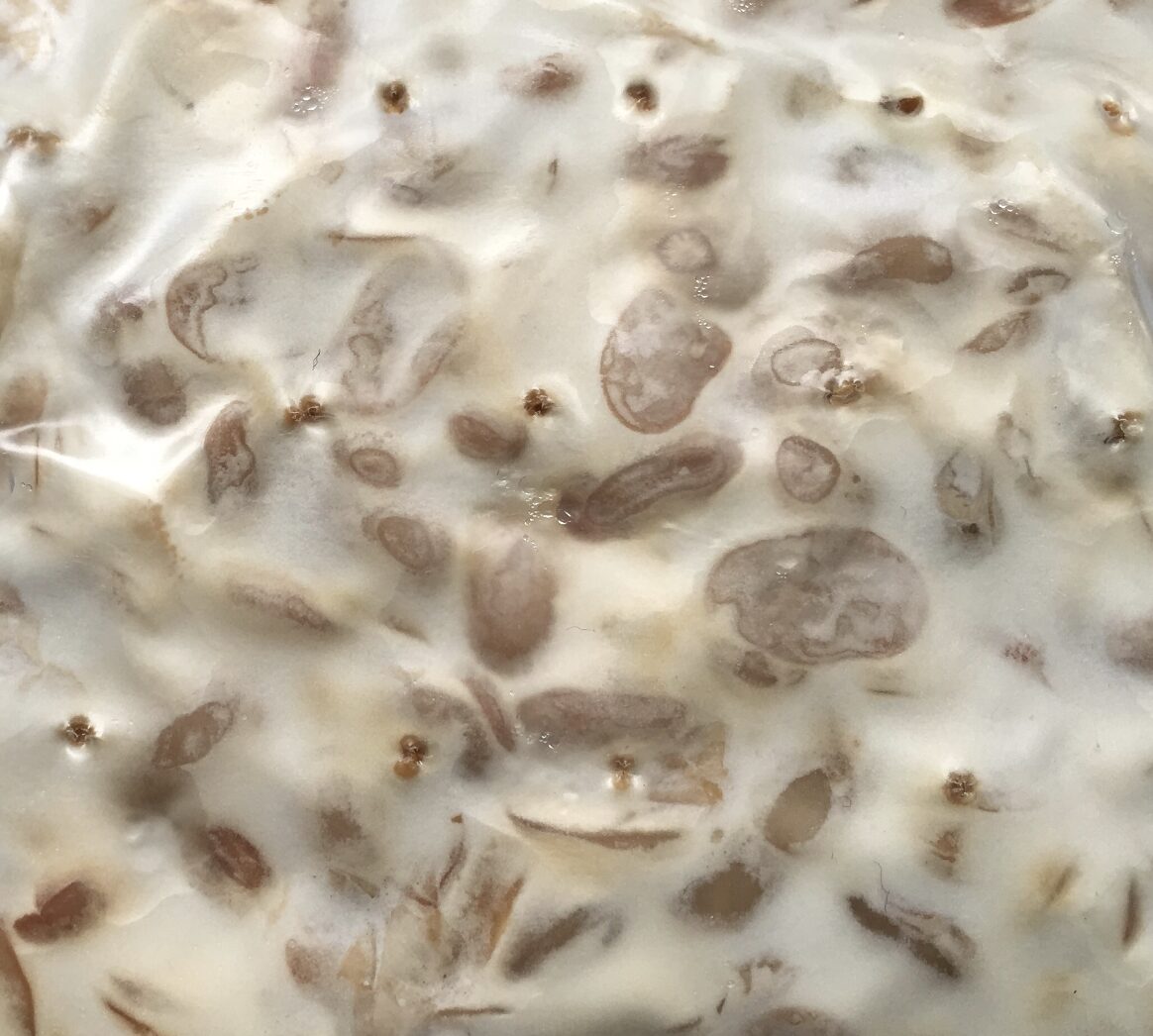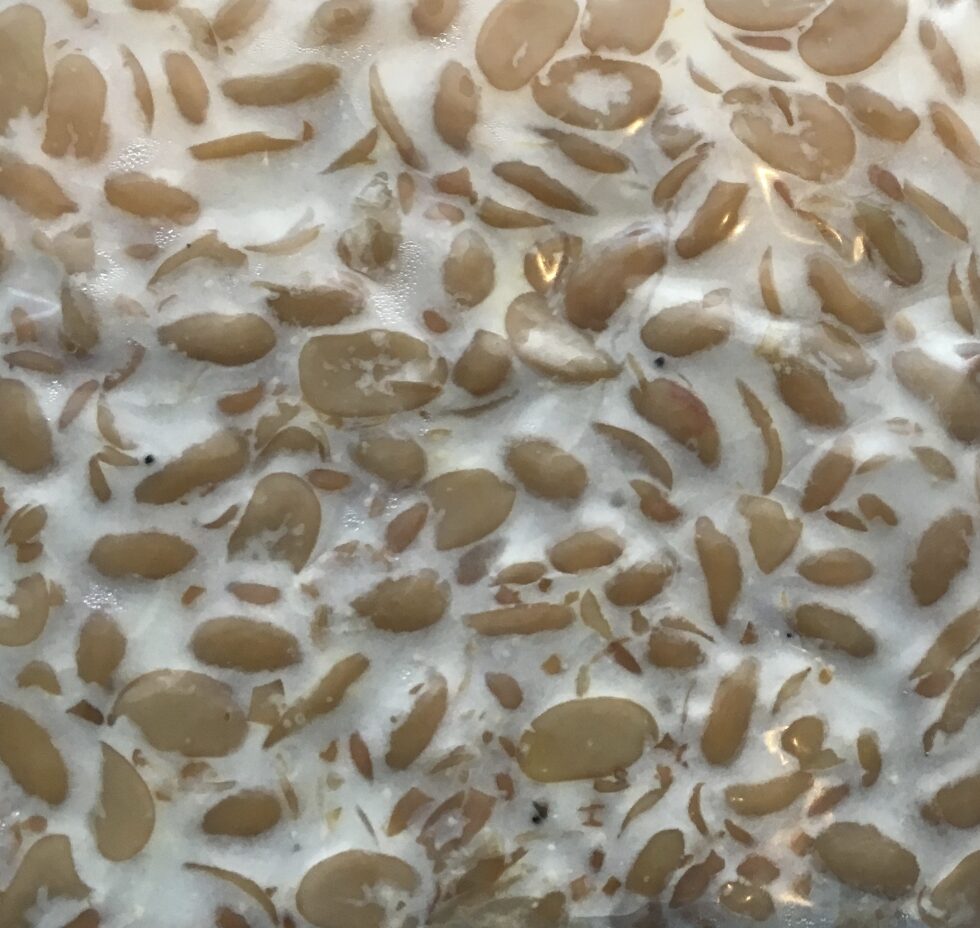
Frequently Ask Questions
Read all about Tempea’s tempeh, plus, more on how to keep it, and how to cook it! Kindly note microwaving is NOT a sufficient method to thoroughly cook our tempeh. Please cook to an internal temperature of 165° F (75° C).
They are both moulds that are edible and safe to eat! The black spots are the spores formed by the Rhizopus culture that we use, so it is fine to eat after cooking. We sell the product during the peak of its fermentation, after which the mould starts to die off after a few days. During this period, stronger flavours and aromas will also start to develop.
Our tempeh is always fresh and never pasteurized nor frozen. The signs to look for in fresh tempeh is that white, fuzzy exterior: this means that the mold is alive and the product is continuing to ferment but is at its “healthiest” condition. Because we are using live cultures, the mold will start to die or kill itself with time. Good tempeh should be firm and have a yeasty or mushroom-like aroma.
Signs of spoilage include:
- Off odours
- Soft, mushy texture (no longer firm to the touch)
- Pink discoloration
- Dark brown beans (almost like roasted coffee beans)
- Slimy or sticky texture

- White, fuzzy mold on the outside.
- Yeasty and mushroom-like aroma.
- Firm to the touch.

- White mold still coating the beans.
- Stronger yeasty aroma.
- Slightly firm.

- Brown beans visible, white mold fading.
- Off odour.
- Still slightly firm.

- Dark brown beans, hardly any white mold.
- Sharp off odour, may also have slime.
- Soft and mushy.
If you’re not sure whether your tempeh has gone bad or not, e-mail us with photos!
We use perforated bags to allow for air circulation during the fermentation process: this lets the mould to grow around and expand in between the soybeans. Because it is a live product, the culture (quite literally) needs air to breathe. This determines how well the finished tempeh binds itself together.
If you’ve looked for tempeh before, chances are the ones you’ve found are all frozen and pasteurized. Fresh tempeh will have superior taste and texture (and we’re not just saying that!) because it hasn’t been heat-treated. The white exterior is a visible sign that our tempeh is as fresh as it can be. Drop by our booth on one of our market days and you can taste the difference for yourself.
Would you believe that our tempeh has 1.4x more protein than extra firm tofu? All the carbohydrates present in our tempeh is also dietary fibre. It also doesn’t contain any sodium, cholesterol or trans fats (unless you add them as you’re cooking). It’s also an amazing source of plant-based omega-3 and omega-6 fatty acids! As a fermented food, it’s easily digested by the body while bringing out unique flavours. We can go on forever.
There’s a lot of debate going on about soy foods and numerous studies are still ongoing. It really depends on a lot of factors: how much soy you consume, what’s your current health condition, where the soy comes from and how it’s processed. If there’s anything conclusive about all these studies, it’s that fermented, whole soy foods are the best type to eat. The fact that we only make our tempeh with certified organic, non-GMO soy is a bonus. For further reading, check out these articles from Time magazine, a vegan doctor (lots of science jargon though!), and Thrive Cuisine. Ultimately, we respect everyone’s opinions and we strongly encourage you to listen to your body first and to live a balanced and healthy lifestyle.
If you are still concerned after reading those sources, please give our soy-free Green Pea tempeh a try first.
Tempea is vegetarian and vegan by nature and we only use certified organic, non-GMO soybeans for our soy tempeh. Currently, our chickpea-lentil tempeh does not use certified organic legumes. Our current process and facility hasn’t gone through the certification process, so we can’t make those claims on our label (just yet).
YES our tempeh is gluten-free, with less than 5 ppm of gluten. We produce in a dedicated gluten-free kitchen and routinely send out samples for gluten analysis. As far as our process is concerned, we also do not use any ingredient that has wheat, rye, barley, oats, triticale, spelt or kamut, and these ingredients are absent from our facility.
As with most fermented foods, there may be a risk for bacterial contamination from mishandling. We like to compare it to raw mushrooms: not only is it more delicious eaten cooked, it’s much safer to cook off anything harmful that could be in the product. Rest assured, proper controls are constantly in place and we remain committed to only producing tempeh that’s safe and beneficial for you.
